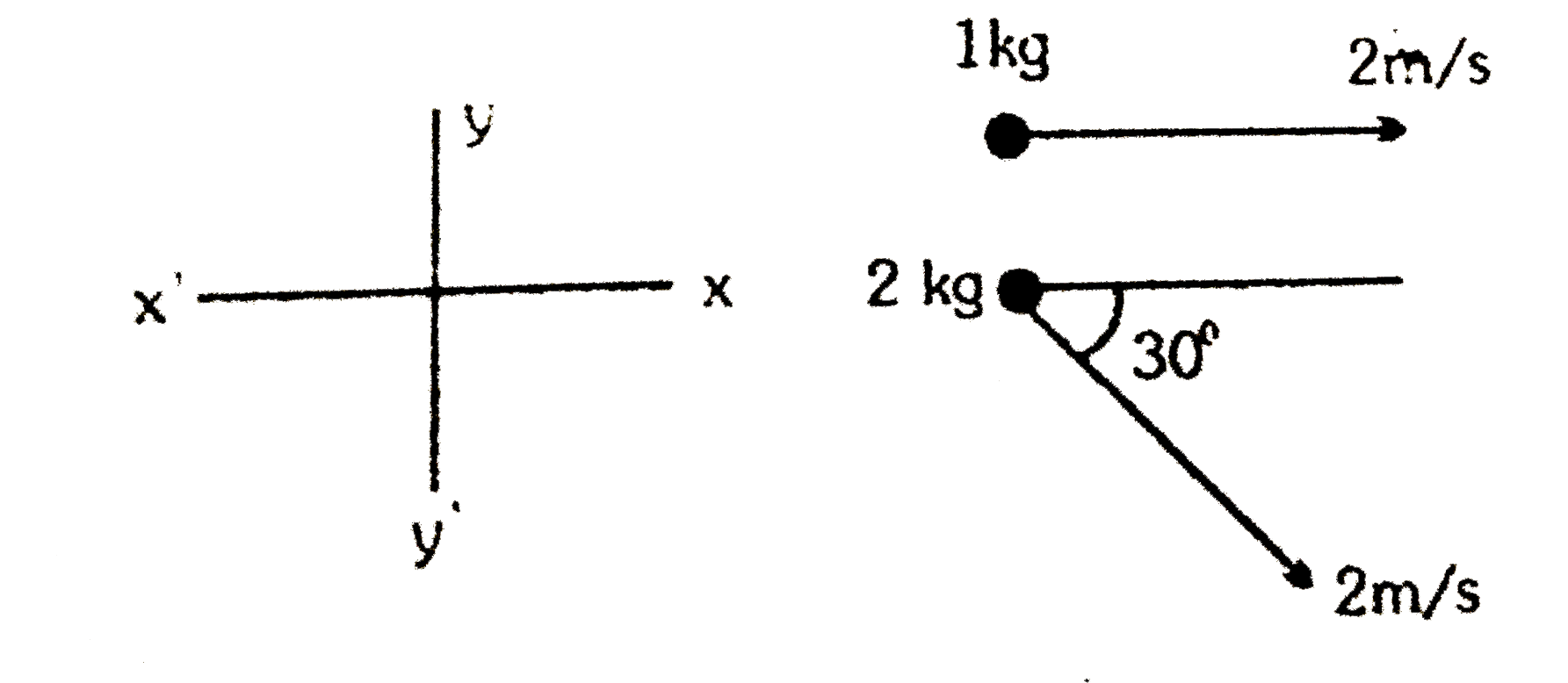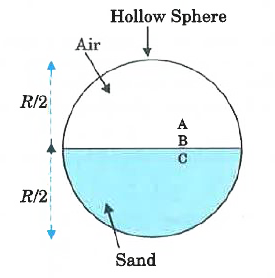The velcoity of centre of mass of the system as shown in the figure :-
 Solution in Gujrati
Solution in Gujrati
(2−2√33)ˆi−13ˆj
(2+2√33)ˆi−23ˆj
4ˆi
None of these
The correct Answer is:B
→vcm=m1→v1+m2→v2m1+m2=1×2ˆi+2×(2cos30ˆi−2sin30ˆj)3
=(2+2√33)ˆi−23ˆj
Topper's Solved these Questions
- CENTRE OF MASSBOOK - ALLEN CHAPTER - CENTRE OF MASSEXERCISE - EXERCISE-II
43 Videos
- CENTRE OF MASSBOOK - ALLEN CHAPTER - CENTRE OF MASSEXERCISE - EXERCISE-III
41 Videos
- CENTRE OF MASSBOOK - ALLEN CHAPTER - CENTRE OF MASSEXERCISE - EXERCISE-V B
19 Videos
- BASIC MATHEMATICS USED IN PHYSICS &VECTORS BOOK - ALLEN CHAPTER - BASIC MATHEMATICS USED IN PHYSICS &VECTORS EXERCISE - EXERCISE-IV ASSERTION & REASON
11 Videos
- ELASTICITY, SURFACE TENSION AND FLUID MECHANICSBOOK - ALLEN CHAPTER - ELASTICITY, SURFACE TENSION AND FLUID MECHANICSEXERCISE - Exercise 5 B (Integer Type Questions)
3 Videos
Similar Questions
Two particle A and B start moving due to their mutual interaction only. If at any tiem 't', →aA and →aB are their respective accelerations, →vA and →vB are their respective velocities, and upto that time WA and WB are the work done on A and B respectively by the mutual force, mA and mB are their masses respectively, then which of the following is alwys correct.
View SolutionA particle of mass m, kinetic energy K and momentum p collision head on elastically with another particle of mass 2m at rest. After collision. :
Column IColumn II(A)Momentum of first particle(p)3/4p(B)Momentum of second particle(q)−K/9(C)Kinetic energy of first particle(r)−p/3(D)Kinetic energy of second particle(s)8K9None
View SolutionTwo particles of masses m1 and m2 in projectile motion have velocities →v1 and →v2 , respectively , at time t=0. They collide at time t0. Their velocities become →v'1 and →v'2 at time 2t0 while still moving in air. The value of ∣∣∣(m1→v'1+m2→v'2)−(m1→v1+m2→v2)∣∣∣
View SolutionAssertion: If the initial and final positions coincide, the displacement is a null vector.
Reason: A physical quantity can not be called a vector, if its magnitude is zero.
View SolutionTwo soap bubbles A and B are kept in a closed chamber where the air is maintained at pressure 8N/m2.The radii of bubbles A and B are 2cm and 4cm, respectively. Surface tension of the soap-water used to make bubbles is 0.04N/m. Find tha ratio nB/nA, where nA and nB are the number of moles of air in bubbles A and B, respectively. [Neglect the effect of gravity.]
View SolutionThe velcoity of centre of mass of the system as shown in the figure :-
View SolutionThree rods of the same mass are placed as shown in the figure. Calculate the coordinates of the centre of mass of the system.

View SolutionThe velocity (in m/s) of centre of mass of the system as shown in the figure is :

View SolutionThe coordinate of the centre of mass of a system as shown in figure : -
View SolutionThe coordinate of the centre of mass of a system as shown in figure : -

View SolutionSix rods of the same mass m and length ? are arranged as shown in figure. Calculate the coordinate of the centre of mass of the system:- У >X
View SolutionWhich of the following points is the likely position of the centre of mass of the system shown in figure?

View SolutionThe acceleration of centre of mass of system as shown in figure is
View SolutionA system consists of three particles located at the corners of a right triangle as shown in the figure. Find the position vector of centre of mass of the system.
View SolutionThe co-ordinates of the centre of mass of the system as shown in figure are
View SolutionA system consists of three particles located at the corners of a right triangle as shown in the figure. Find the position vector of centre of mass of the system.
View Solution
